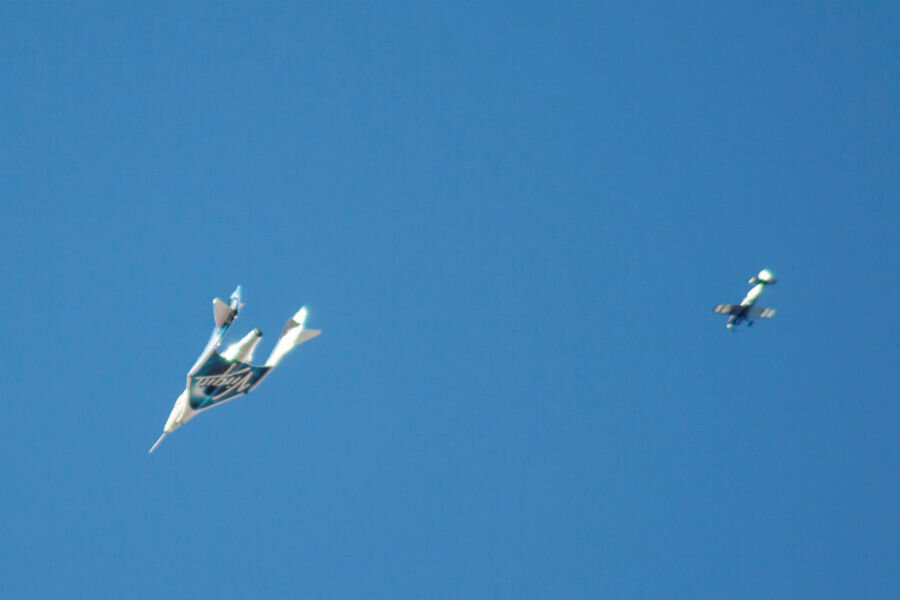Space tourism: Virgin Galactic makes successful glide test
Loading...
Virgin Galactic's SpaceShipTwo completed a significant milestone on Saturday, completing its first test flight free of its carrier aircraft.
The successful test marked a new testing phase for the craft, dubbed VSS Unity, on its way to becoming what the company hopes will be the world's premiere vehicle for space tourism. More than 600 people (including Leonardo DiCaprio and other celebrities) have already paid $250,000 up front for a suborbital flight.
There is still a lot of testing to be done before paying passengers can be taken up, however. And Virgin Galactic is being extra cautious, largely staying out of the limelight since their previous iteration of SpaceShipTwo crashed in 2014, killing one pilot and injuring another. As VSS Unity moves into the next phase of testing, the company hopes to create a safer and more reliable spacecraft as it ventured to the fringes of space.
VSS Unity was first launched in September of this year, on the back of WhiteKnightTwo, a carbon composite jet cargo plane, VMS Eve. Since then, multiple tests on the back of the carrier plane have provided engineers with valuable data on how the shape of the spacecraft interacted with the wind currents in flight. These tests led to various tweaks in the design that resulted in a plan to test the plane in a free glide in November. But unfavorable wind on the day of the planned test pushed the free glide test back to Saturday.
"As expected, for this first gliding test flight, VSS Unity was flying light and slow, achieving a maximum speed of approximately Mach 0.6 while gliding home from an altitude of 50,000 feet," reads a post on Virgin Galactic's website. "An initial look at the data as well as feedback from our two pilots indicate that today’s flight went extremely well, but we’ll take the time to properly and thoroughly analyze the vehicle’s performance before clearing the vehicle for our next test."
The company plans to do a number of similar glide tests with VSS Unity before moving on to rocket-powered tests.
In 2004, Virgin Galactic's SpaceShipOne became the first manned commercial vehicle to complete a flight into space, paving the way for what was hoped would be a budding space tourism industry. But plans for such an industry stalled after an in-flight error during a test flight of the company's first SpaceShipTwo caused the craft to crash. A subsequent investigation found that the crash might have been prevented with more stringent safety procedures.
When VSS Unity was unveiled in February of this year, it looked largely identical to the vehicle that crashed in 2014. But as The Christian Science Monitor previously reported, the new craft contained a number of safety improvements over its predecessor, including a pin designed to prevent the pilot from unlocking the feathering mechanism on the tail of the aircraft accidentally, which was believed to be the cause of the 2014 crash.
Rigorous testing of VSS Unity will likely continue to build confidence in the craft's airworthiness. "We're looking forward to getting back into the skies as soon as the engineers say we are ready to do so," said the Virgin Galactic post.








